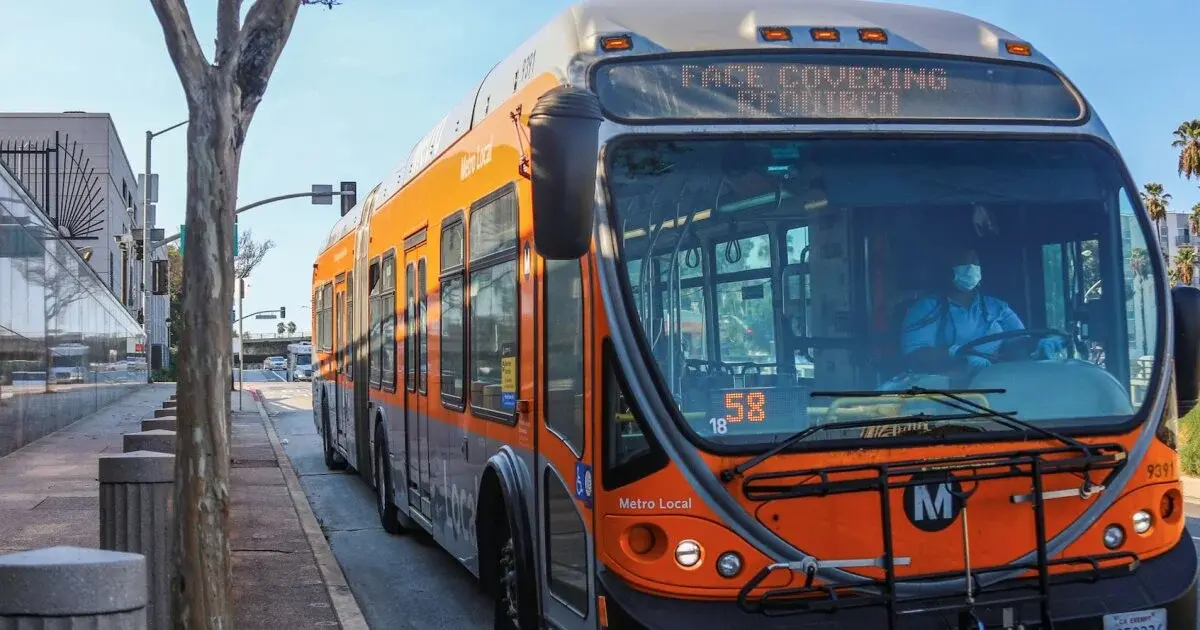
Hmm, reading the article, it sounds to me like there’s still a schedule. But instead of it being based on a set time, it’s more like “The busses should try to keep a 2 km distance to each other at all times” (purely imaginary/exemplary number). I’m just confused what the bus drivers are supposed to do, once the leading bus hits a traffic jam or something of the sort. Will they pull over to the side of the road and not move until the leading bus(ses) go?
As @bluGill@kbin.social said, if the busses are super frequent (I would say 5 min and less in between each bus) then nobody really checks the timetable anyway (according to my experience with Munich’s public transit system)

They can driver a little slower. they can wait a little longer for people to sit down before closing the door and leaving. If they are the ones behind they can just tell riders forget the fare, just go sit down quick. Those are the obvious ones. I’m sure those in the business know of others.

Those are pretty smart options, I honestly didn’t think of (to be fair to myself, I only spent five seconds of half-assed brain power on it)

In my town (Oviedo, Spain), when two buses of the same route are one after the other, the leading bus driver doesn’t open the doors for people to enter, only the doors for people to exit, so the bus driver who is behind can accept those waiting people… and it might have people who want to exit too. So, eventually, the gap between both buses increases.

This is for frequent buses. I don’t know how they define frequent, but I personally define it as every 5 minutes or less (some use 7 minutes, but that is an odd number). If the bus is really frequent nobody is looking at the schedule anyway, they just go to the bus stop and get on the next bus when it arrives.
This is how all frequent routes should run. However for less frequent routes people who ride have to plan their life around it. They need to get to work/church/bowling on time, so they depend on the bus getting places on time. (if the bus is schedule to arrive just before their event starts they will get an earlier one because buses are never exact enough to trust)

That said, more routes should also be frequent. You’ll never build major ridership for a local transit service that requires careful planning to use. The higher the frequency, the more likely people will turn up to use the service; there’s an optimization point where you need to balance frequency and ridership.
Especially in North America, there are lots of routes that are FAR too infrequent to be considered “reliable”. And if people aren’t sure that bus route is reliable, they’ll plan to not use it.
When you consider how much more expensive it is, in real and knock-on terms, for a city to be built around a presumption of car ownership and parking availability compared to running even “excessively” frequent transit service, it’s a no brainer. Add more busses. Unfortunately, a lot of people fundamentally misunderstand which parts of the city budget are the major cost centers so they believe transit is “expensive” but parking and pavement for cars isn’t.

100% agree. All transit routes should run at least every half an hour for at least 14 hours per day (even holidays), and every hour the rest of the time. If you can’t afford that, then the transit is not reliable and everyone needs a car.
Running every 5 minutes all day means you start to wonder why you even have a drivers license when you never drive.

Yeah, this really would work only with very frequent buses. A bus comes through my village once every 90 minutes, so the schedule is literally the only thing that makes even pass for useable. Turning up at a bus stop and being like “a bus might be along sometime in the next 2 hours” just wouldn’t be viable.

7 isn’t an that odd a number
it is 2 every 15 mins
which i would classify as frequent
Sure, but if you run every 7 minutes all day soon you are annoyingly offset from other buses. A 7 minute average wait is normally less than 4 minutes, and so acceptable. However if you happen to be transferring to a low frequency bus it can be a 8-10 minute wait every time as you can’t trust the one arriving sooner will allow time to make the transfer.
All good transit systems are based off of transfers, and 7 is not a nice number for transfers. A 5 minute wait is okay, but 7 starts to get annoying. 7 doesn’t work with a clockface schedule. There is no city in the world so uniformly dense/rich that they don’t have some lower frequency routes that need to run a clockface schedule on. With 7 minute frequency you can never learn what what time you need to be at the stop to make the transfer, which destroys the whole point of a clock face schedule.
If you are lucky enough that you never need to transfer, then 7 minutes is frequent enough. However it doesn’t play well with the rest of the system.

Pretty sure this is already the system used in London. Works fine for high frequency routes and for drivers that only do the same route all day one after another. Doesn’t work for low frequency routes or drivers that do different routes throughout the day

This is a good idea for long routes with medium to high demand that have a portion through major construction/traffic causing buses to bunch up. Then buses can be placed in and out of service at the terminals as needed.

Where I live busses never keep to the time table anyway, so why bother having it at all?


